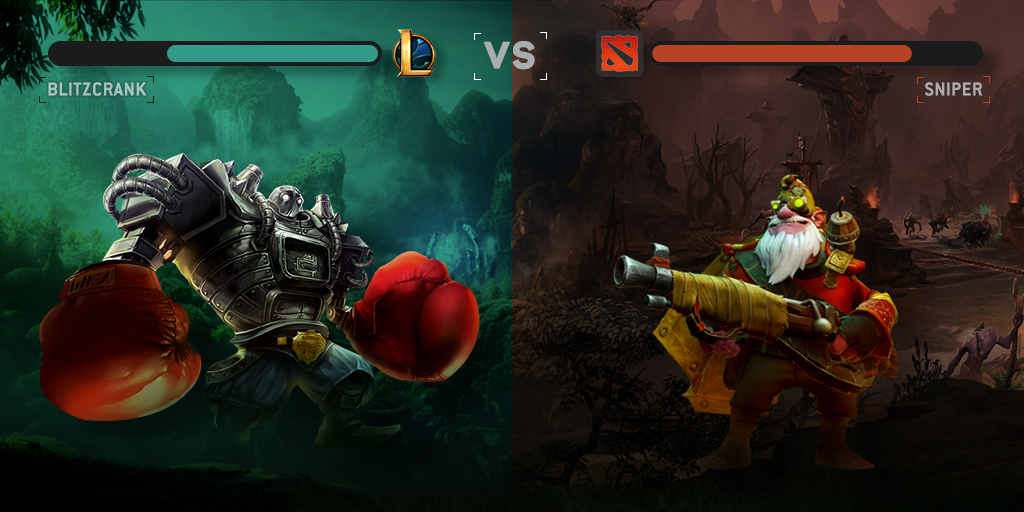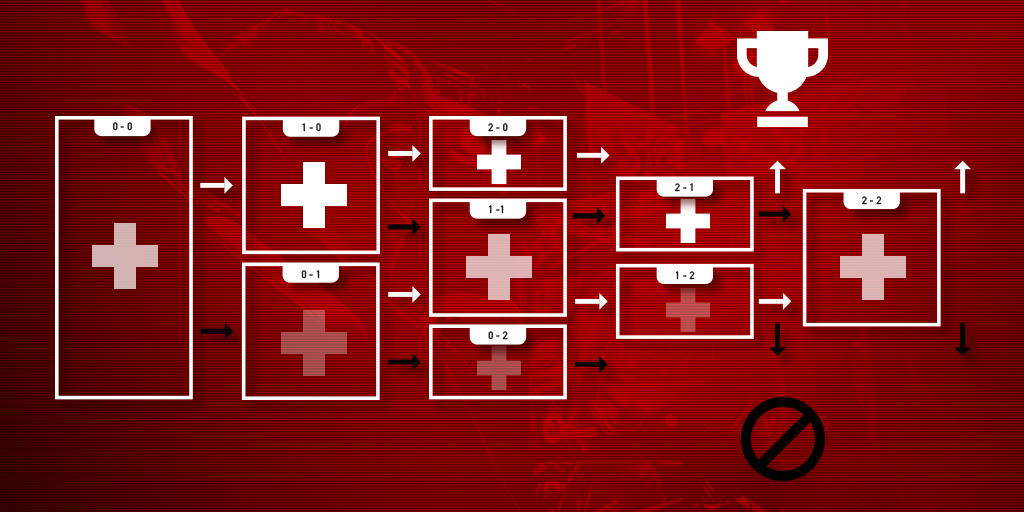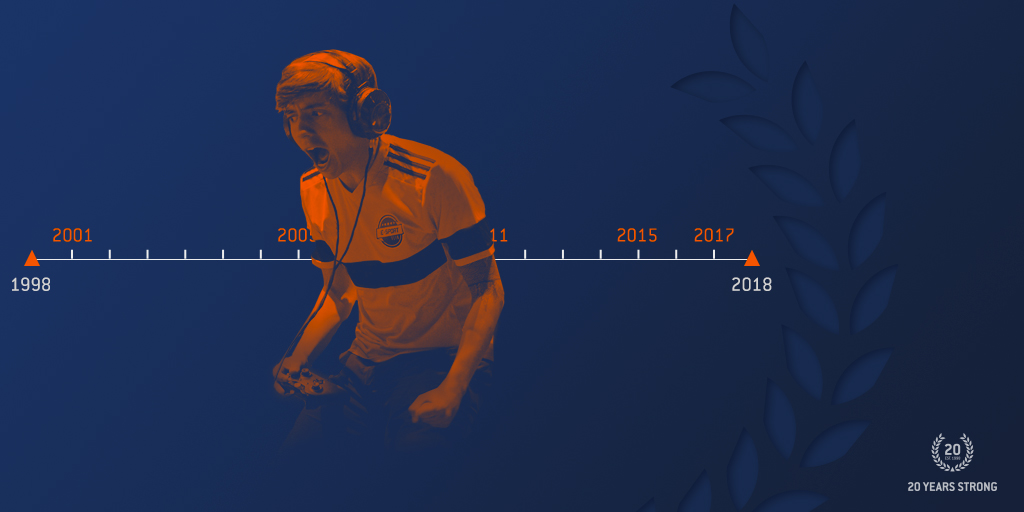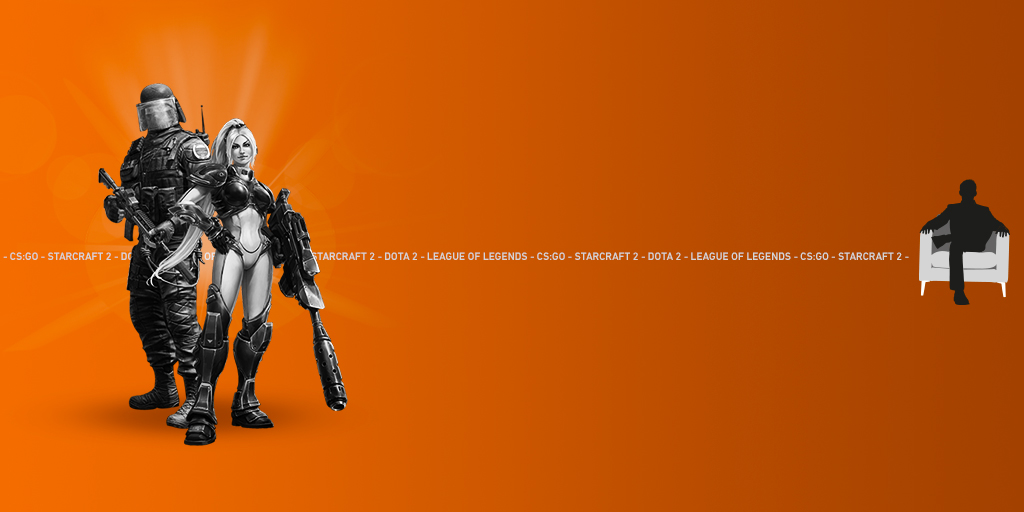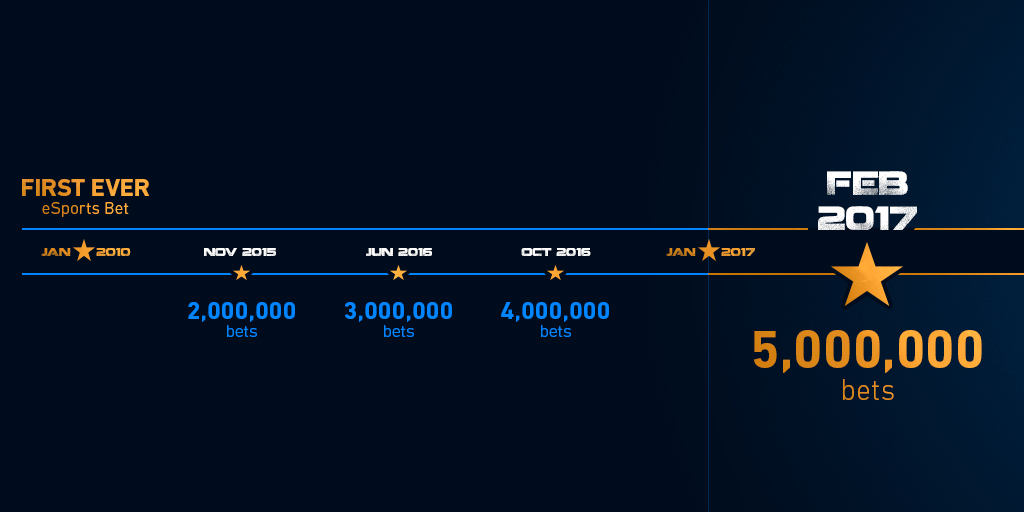League of Legends and Dota 2 have been sat at the top of the eSports scene for a while now. To an untrained eye they look virtually the same and while there are obvious similarities between the two, fundamental differences remain. Read on to find out more.
Betting on League of Legends (LoL) and Dota 2 can be difficult without comprehensive knowledge of the inner workings of each game. Applying what you know from LoL betting to Dota 2 betting (and vice versa) would be a big mistake as certain elements that can influence the result of a match can be entirely different in one compared to the other.
Dota 2 and LoL share a number of similar traits, which is to be expected since both are MOBA’s (multiplayer online battle arena) spawned from the same mod - a custom map created for WarCraft III called Defence of the Ancients or DotA.
Valve (the creator of Dota 2) and Riot Games (the creator of LoL) used this mod to inspire their own games using the same core ideas and values, although both companies took their respected games in slightly different directions.
Riot decided to focus on making a game that was visually appealing and easy to pick up, but hard to master. Valve, however, wanted to create a game that was a lot more strategic. Think of League of Legends as a slightly more watered down, simplified version of Dota 2.
What are the similarities?
Both LoL and Dota 2 are played in teams of five on one map. The map’s layout is similar on both games, consisting of a top lane, bottom lane, mid lane and a jungle area. They also utilise different character skins but these are purely aesthetic.
To win a match in both, a team must ultimately destroy the opponent’s final base, named the Nexus in LoL and the Ancient in Dota2.
- Find out more about Dota 2 betting
At the start of a match, there is a laning phase. For a certain period of time on both games players will ‘farm’ (the killing of minions or creeps) to gain experience points (XP) and gold. This is used to level up the heroes and champions in order to be strong enough to attack the enemy base and defeat them.
A few of the 100+ characters from both games have a striking resemblance to one another. These would include Ursa and Warwick, Drow Ranger and Ashe and Winter Wyvern and Anivia. Although similar in appearance, the aforementioned characters are still quite different in terms of roles and abilities.
In League of Legends, players have four abilities – three basic abilities and their ultimate that can be used upon reaching level six.
After the laning phase is over, teams group up in order to work together as a squad to eliminate enemy heroes or champions and buildings. Teams will often try to secure Roshan (Dota 2) or Baron (LoL) (the largest natural monster in both games) if they achieve a few kills on the opposing team - doing so without achieving a few kills will heavily diminish their chances of securing the creature.
Roshan and Baron are situated towards the north side of their respective maps, sharing similar respawn times and rewards. Slaying either rewards a team with gold, as well as a secondary item (that differs in both games). In Dota2, this is an item used by one team member called the Aegis of the Immortal, whereas the LoL reward (Hand of Baron) is a buff given to the entire team.
LoL vs Dota 2: Main gameplay differences
As previously mentioned, the laning phase does still exist in both games but the structure of this phase is entirely different. To begin with, there are far fewer skill shots (shots in which a player must manually aim) in Dota 2 and as a result of this far less poking (where a player engages the enemy champion from a distance).
Denying is the act of killing a player’s own creep in Dota 2 to stop the opposing team getting the gold and XP reward - stopping the opposing hero getting stronger. Denying does not feature in LoL with champions only able to strike enemy minions. Heroes can also be denied in specific circumstances.
Heroes can stay in their lane for the duration of the laning phase in Dota 2 because of the courier. The courier is an animal that brings purchased items to a hero wherever they are located. The animal changes to a flying courier at the three-minute mark, enabling items to reach their chosen hero even quicker.
There are no couriers in LoL so champions need to return to their fountain (the spawn base) to make purchases. This is where the only shop on the Summoner’s Rift (the name of the LoL map) is located, whereas in Dota 2 there are three shops at the bottom of the map – the main shop, side shop and secret shop.
In League of Legends, players have four abilities – three basic abilities and their ultimate that can be used upon reaching level six.
The mechanics of both games are also different and alter the feel of the games. In LoL, a champion turns and moves instantly, but in Dota 2, players must wait for the hero to turn and face the other direction before he/she will walk forward.
Gold and XP are important in LoL and Dota 2, although in Dota 2 there are two types – reliable and unreliable. Reliable gold is any bounty obtained from hero kills, Roshan, couriers and Hand of Midas (an item that grants the user gold when used). Unreliable gold, however, is everything else from creeps, monsters and starting gold.
Upon dying in both games, players are given a death timer, which will be varying amounts depending on the length of the game. In Dota 2 only, players can use a feature called buyback to respawn instantly for a fee (dying also causes a loss of money from the unreliable pot of gold in Dota 2).
Situated at positions around the map in Dota 2 are runes. Runes are special boosters that come in two categories – bounty runes (which give someone extra gold) and power-up runes (that grant a hero a variety of buffs and effects for a short period of time). They can be stored inside of a bottle to be used later during team fights.
Although in both games there is scaling (how well a champion or team gets stronger compared to the average), it works in different ways. Scaling in LoL is more of a gradual curve, getting stronger as a player levels up until a peak is reached compared to other champions, where they will then begin to scale off.
In Dota 2, certain team compositions will have a scaling peak, a moment a team needs to win by or risk scaling off and losing the game altogether. Teams will be aware of this and as such play defensive until the peak point has passed.
In Dota 2 the support heroes are the ones making the plays and starting the engagements, whereas in LoL they are used predominantly to support the ADC.
In League of Legends, players have the opportunity to use a summoner spell for teleporting, enabling them to teleport to their turret, friendly minion or ward. The opportunity to teleport back to the base using the recall (a teleportation ability) function is also available. It is slightly different in Dota 2, as players use a purchasable item called the Town Portal Scroll to teleport to friendly buildings.
In LoL, destroying a team’s Inhibitor (a building that stops the creation of super minions and creeps) will mean super minions spawn for five minutes until the inhibitor appears again. Dota 2 is different in this instance as when the equivalent building, the Barracks (commonly known as Rax) is destroyed, it will be eliminated for the remainder of the game.
LoL vs Dota 2: Main non-gameplay differences
Players can choose two summoner spells before a game in LoL - these contain different abilities that can be used during a match. They include flash (allowing players to teleport a few metres), barrier (shields a champion), ignite (burns an enemy champion for five seconds) and many more.
Denying is the act of killing a player’s own creep in Dota 2 to stop the opposing team getting the gold and XP reward - stopping the opposing hero getting stronger.
These summoner spells are usually assigned to different roles, with smite (a summoner spell that attacks monsters or enemy minions only) always used by the jungler. This is not a feature at all in Dota 2 as choices made during a match weigh heavier on the type of role you end up playing.
The roles are predetermined in LoL before a game begins, but this is entirely different in Dota 2 with roles being a lot more flexible. Most heroes can play more than one role, enabling teams to switch up their compositions midgame.
There are five main roles in LoL – ADC (attack damage carry), top, jungler, mid and support, with many more in Dota 2. The main roles in Dota 2 are carry, disabler, initiator, jungler, support, durable, nuker, pusher and escape. With their only being five champions per match and nine different roles, no two games of Dota 2 are the same.
Support heroes are used differently in the two games – in Dota 2 the support heroes are the ones making the plays and starting the engagements, whereas in LoL they are used predominantly to support the ADC.
In League of Legends, players have four abilities – three basic abilities and their ultimate that can be used upon reaching level six. This is very different in Dota 2, where players can have a much larger number of abilities which makes the game a lot more complicated: The hero Invoker is largely seen as one of the most complicated heroes to control in any game with a staggering 14 abilities.
In Dota 2 only, players can use a feature called buyback to respawn instantly for a fee.
Another major difference between LoL and Dota 2 is talents - these were only recently added to Dota 2 (in December 2017). Talents are traits unique to each hero that are chosen every fifth level, starting at level 10 that gives a buff to a heroes attributes, additional gold, or experience gain. They can also boost a heroes abilities, adding a new dynamic to the game. The only option when levelling up in LoL at the moment is to add points to the abilities to increase their level.
It is essential to understand the specific differences between the two games in order to have the chance of lucrative rewards when betting on them. As detailed throughout, simply having an overall understanding of MOBAs cannot replace a deep knowledge and it is therefore important that the differences between the two are understood, as without them you may come into difficulties when betting on either Dota 2 or LoL.
Want to learn more about betting on Dota 2 or LoL? Go back to our eSports betting hub.

